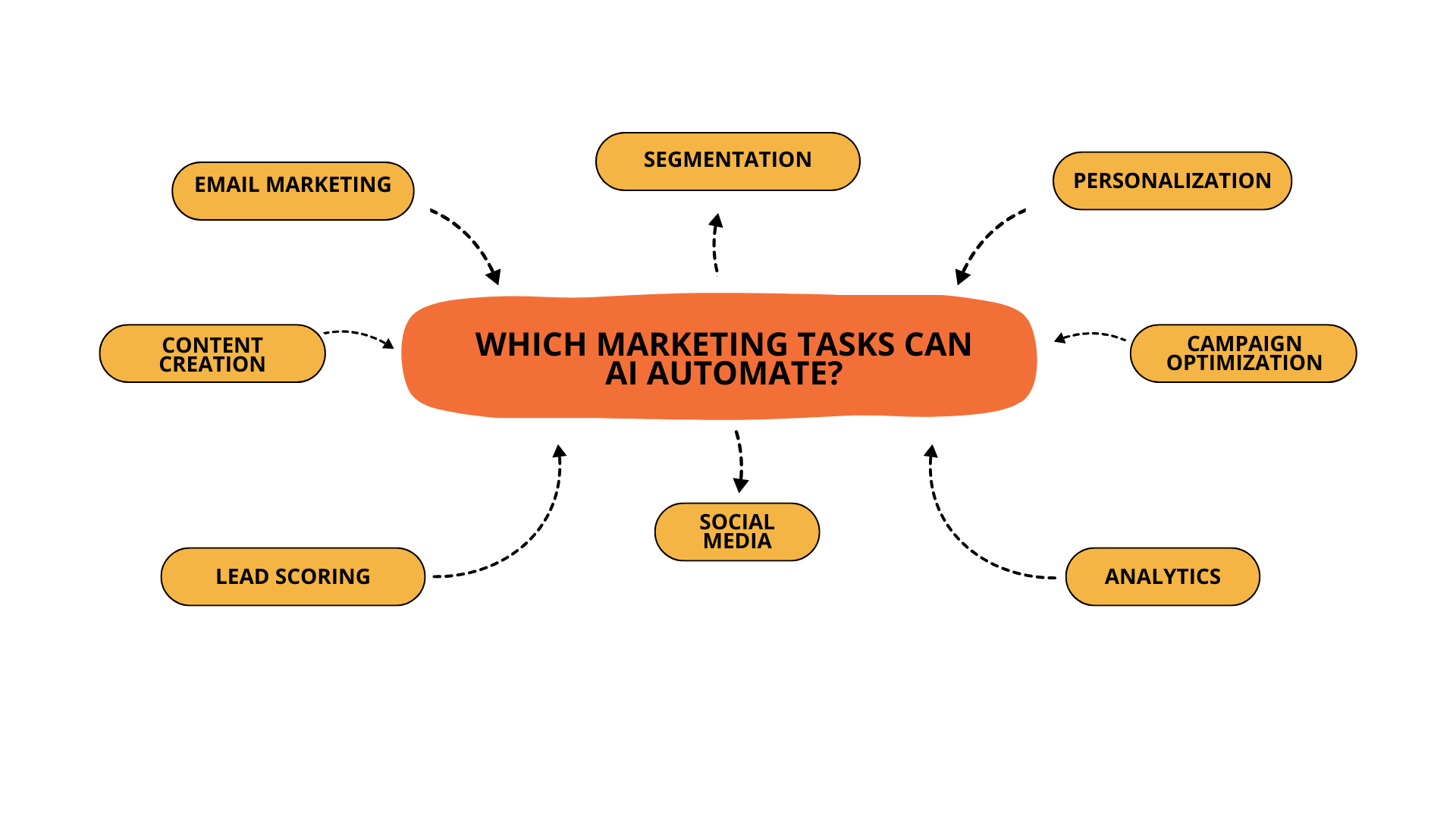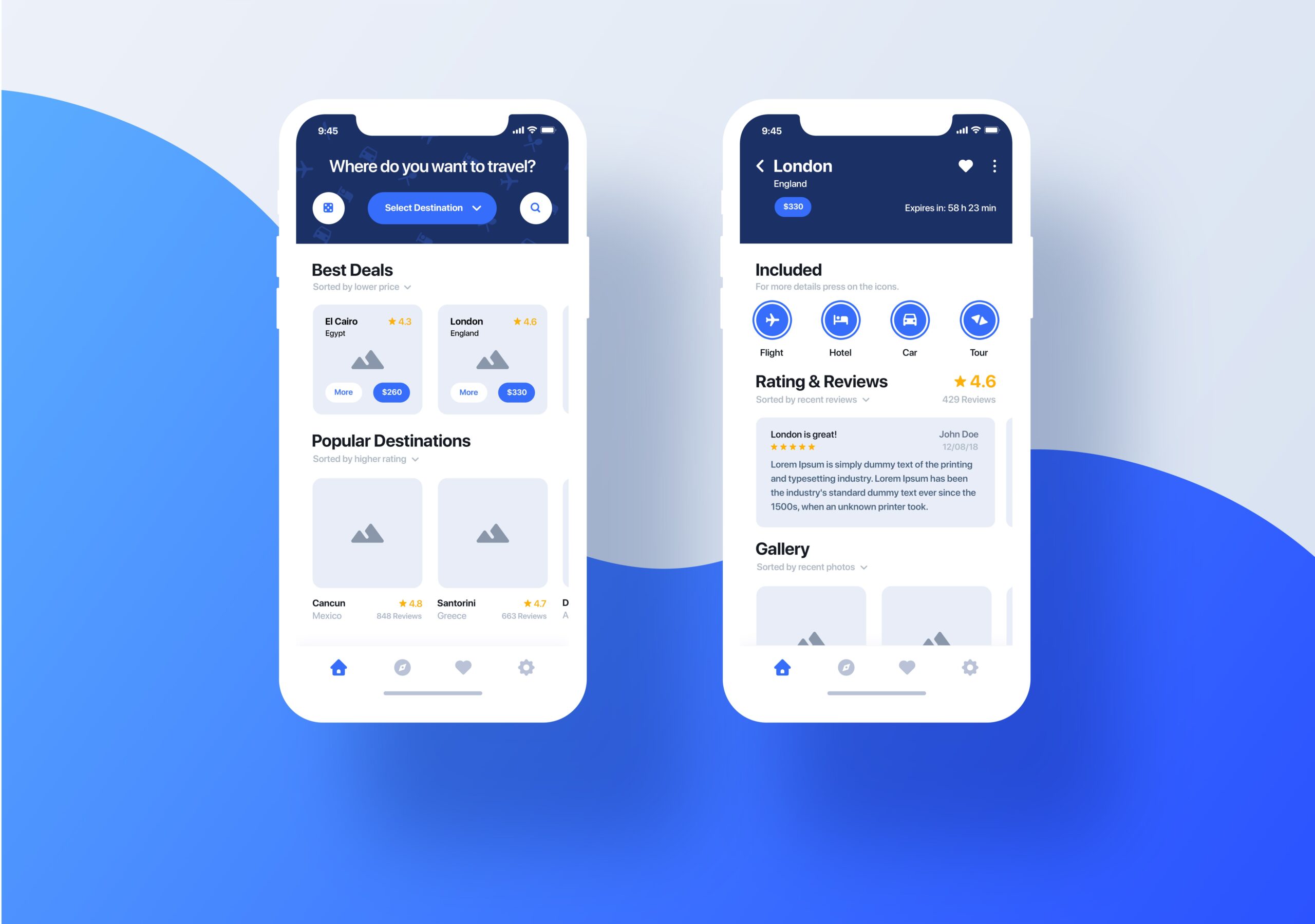In today’s fast-paced digital world, artificial intelligence isn’t just a buzzword—it’s a transformative force reshaping how small businesses connect with customers, streamline operations, and grow sustainably. As traditional marketing channels become saturated and competition intensifies, AI offers an innovative solution to tailor campaigns with precision and efficiency, even for those working with limited resources. This blog post will introduce you to the evolving landscape of AI marketing, detailing how its data-driven personalization and automation capabilities can empower your business to deliver the right message at the right time.
Imagine being able to predict customer preferences, craft customized advertisements, and optimize your marketing budget—all without the overwhelming complexity usually associated with advanced technology. By integrating AI tools into your marketing strategy, you can not only enhance customer engagement but also make smarter decisions based on real-time insights. This means more effective use of your resources and, ultimately, a stronger return on investment.
In the following sections, we’ll explore what AI marketing is all about, how it benefits small business owners, and the practical steps you can take to implement these cutting-edge solutions. Whether you’re just beginning your digital transformation or looking to refine your existing strategy, this guide will provide you with actionable insights and real-world examples to help you navigate the exciting possibilities AI marketing brings to the table. At Digital Visibility, our goal is to introduce new concepts and technologies to help you grow your business.
Understanding AI Marketing for Small Business
Before diving into how AI can supercharge your marketing efforts, it’s crucial to establish a solid understanding of what AI marketing really means and why it’s rapidly becoming an indispensable tool for small businesses. In this section, we’ll explore the definition and core concepts behind AI marketing, and then discuss its significance for businesses that may not have large budgets or dedicated marketing teams. By grasping these fundamentals, you’ll be better equipped to harness AI to create more effective, personalized campaigns that resonate with your target audience.

What is AI Marketing?
AI marketing refers to the use of artificial intelligence technologies to optimize and automate various marketing activities, from content creation to customer segmentation. It encompasses machine learning, natural language processing, and predictive analytics—all aimed at improving the efficiency and accuracy of your marketing efforts. At its core, AI marketing is about leveraging data to understand consumer behavior, predict future trends, and deliver highly customized experiences across different channels.
One of the primary advantages of AI marketing is its ability to process and analyze large volumes of data in real time. This means that even small businesses can gain insights that were once only accessible to larger enterprises with big data teams. For example, AI tools can sift through customer interactions on social media, website visits, and purchase histories to identify patterns and trends, enabling you to tailor your messaging to fit specific audience segments.
Here are some key features and benefits of AI marketing:
- Data-Driven Insights: Gain a deeper understanding of your customers by analyzing their online behavior.
- Personalization at Scale: Deliver customized content and offers to individual users.
- Automation of Routine Tasks: Save time by automating repetitive tasks like email marketing and ad optimization.
- Predictive Analytics: Forecast future trends and customer needs to stay ahead of the competition.
By integrating these capabilities into your marketing strategy, AI marketing transforms how you interact with potential customers, making your campaigns more targeted, relevant, and cost-efficient.
Why It Matters for Small Businesses
For small businesses, every dollar and minute counts. AI marketing levels the playing field by allowing you to do more with less—streamlining operations, reducing manual workloads, and ultimately improving your return on investment. Rather than relying solely on traditional methods that can be costly and inefficient, small business owners can now tap into advanced technologies that drive results without requiring massive resources.
The real-world impact of AI marketing is significant:
- Cost Efficiency: AI tools help you minimize waste by focusing on strategies that yield measurable results, ensuring that your marketing budget is well spent.
- Enhanced Customer Engagement: Personalization enables you to create messages that resonate with your customers, fostering a stronger connection and higher customer satisfaction.
- Scalable Solutions: As your business grows, AI marketing systems can adapt and scale with you, providing a sustainable foundation for long-term success.
Moreover, AI marketing doesn’t just automate processes—it also empowers you to make smarter decisions. For instance, by analyzing customer data and predicting purchasing behavior, AI can help you optimize your ad spend and refine your overall strategy. This level of insight is crucial for small businesses that need to be agile and responsive in a competitive market.
Consider these practical reasons why small businesses should embrace AI marketing:
- Improved Targeting: Focus your efforts on segments most likely to convert, reducing unnecessary spending.
- Real-Time Adjustments: Quickly adapt campaigns based on real-time performance data.
- Streamlined Workflow: Free up valuable time to concentrate on core business functions rather than getting bogged down in manual marketing tasks.
In summary, AI marketing offers a strategic advantage that can transform the way small businesses reach and engage their customers. It’s not merely a futuristic concept—it’s a practical solution available now, providing a competitive edge by making marketing more efficient, personalized, and data-driven.
The Benefits of AI-Driven Personalization and Automation
Artificial intelligence has quickly moved from a futuristic concept to a practical, transformative tool for small businesses. AI-driven personalization and automation not only streamline operations but also empower business owners to deliver tailored experiences that directly boost revenue and engagement. In this section, we delve into three key benefits—cost efficiency and increased ROI, enhanced customer engagement, and better data insights—that illustrate how these technologies can revolutionize your marketing efforts.
Cost Efficiency and Increased ROI
By automating routine marketing tasks, AI enables small businesses to achieve more with limited resources. Automation removes the need for labor-intensive processes, allowing you to focus on high-impact activities. This shift not only cuts costs but also optimizes your budget, ensuring every marketing dollar is spent wisely. Rather than relying on guesswork, AI tools analyze historical data and real-time performance to adjust campaigns, significantly reducing wasted spend.
In addition, AI-driven systems facilitate dynamic ad targeting and automated bid management, which results in more efficient ad spend and higher returns. With continuous optimization, your campaigns can automatically adapt to market fluctuations and consumer behavior, leading to sustained improvements in conversion rates and overall ROI. Small business owners can now compete with larger enterprises by leveraging these scalable solutions.
Key benefits include:
- Lower Operational Costs: Automate repetitive tasks and reduce manual labor expenses.
- Optimized Ad Spending: Use data-driven strategies to allocate budget more effectively.
- Continuous Campaign Improvement: Adjust marketing strategies in real time for better performance.
These advancements mean that even with a modest marketing budget, small businesses can enjoy significant cost savings and drive growth, all while reallocating resources to strategic initiatives.
Enhanced Customer Engagement
AI enables a deeper understanding of customer behavior, which is the cornerstone of building lasting relationships. By leveraging machine learning, small business owners can analyze vast amounts of customer data—ranging from purchase history to social media interactions—and craft personalized messages that resonate. This tailored approach leads to more meaningful interactions and builds stronger customer loyalty over time.
Furthermore, AI-powered personalization ensures that each customer receives a unique experience. Whether it’s customized product recommendations, personalized email campaigns, or dynamic website content, the integration of AI allows you to speak directly to the needs and interests of your audience. This kind of engagement not only improves customer satisfaction but also increases the likelihood of repeat purchases.
Consider the following engagement enhancements:
- Targeted Messaging: Deliver content that aligns with individual customer preferences.
- Dynamic Website Experiences: Adjust website content in real time based on user behavior.
- Personalized Email Campaigns: Use AI to send the right message at the right moment.
By implementing these strategies, small business owners can create a more interactive and customer-centric experience, turning casual visitors into loyal advocates for your brand.
Better Data Insights
One of the most transformative benefits of AI in marketing is its ability to turn raw data into actionable insights. AI algorithms can process and analyze customer behavior across multiple touchpoints, revealing trends that might otherwise go unnoticed. This deep dive into consumer data enables you to make informed decisions that can refine your marketing strategy and drive future growth.
Not only does AI help in understanding what your customers want, but it also predicts what they might need next. Predictive analytics, a key component of AI-driven marketing, can forecast trends, optimize inventory, and even suggest personalized offers before a customer expresses interest. This proactive approach means you can anticipate market changes and adapt your strategies accordingly, ensuring that your business stays ahead of the competition.
Essential advantages include:
- Actionable Insights: Gain a clear picture of customer behavior and campaign performance.
- Predictive Analytics: Anticipate trends and prepare strategies in advance.
- Enhanced Decision Making: Use real-time data to continuously refine your marketing efforts.
Overall, by harnessing AI for better data insights, small business owners can transform their marketing from reactive to proactive. This not only increases efficiency but also builds a robust framework for sustained success in a competitive marketplace.
How Small Business Owners Can Implement AI Marketing
For small business owners, the promise of AI marketing is compelling—but turning that promise into action requires a structured approach. In this section, we break down the process into three key subsections: assessing your current needs, selecting the right tools and platforms, and implementing a step-by-step integration plan. By following these guidelines, you can effectively incorporate AI into your marketing strategy and start reaping its benefits immediately.
Getting Started: Assessing Your Needs
Before investing in any new technology, it’s crucial to understand where your current marketing efforts stand and where there are gaps that AI could fill. Begin by conducting a comprehensive audit of your existing marketing channels, from email campaigns to social media engagement and website performance. This initial assessment will help you pinpoint the tasks that consume the most time and identify areas where automation or enhanced personalization could make a significant difference.
Start by gathering data on your current campaigns:
- Review key performance indicators (KPIs) such as click-through rates, conversion rates, and customer retention.
- Identify repetitive tasks or processes that could be automated.
- Analyze customer feedback and engagement patterns to uncover unmet needs or opportunities for personalization.
Next, map out your customer journey. Determine how potential customers find you, interact with your brand, and ultimately make purchasing decisions. Ask yourself:
- Which touchpoints generate the most engagement or revenue?
- Are there areas where customers drop off or express frustration?
- How can AI tools help smooth these transitions or add value through personalized interactions?
Finally, outline your business goals for the next 12 to 24 months. Whether it’s increasing revenue, expanding your customer base, or enhancing brand loyalty, defining clear objectives will guide your AI implementation strategy. By understanding your current situation and desired outcomes, you’re better positioned to select the right solutions and set realistic expectations.
Choosing the Right Tools and Platforms
Once you’ve assessed your needs, the next step is selecting AI tools that align with your business objectives. The market is flooded with a variety of AI solutions—from chatbots and email automation systems to comprehensive AI-driven analytics platforms. Your goal should be to choose tools that not only fit your budget but also integrate seamlessly with your existing marketing ecosystem.

When evaluating AI tools, consider these factors:
- Ease of Use: Opt for platforms with a user-friendly interface that doesn’t require extensive technical expertise.
- Scalability: Choose solutions that can grow with your business and adapt to increasing data or customer interaction levels.
- Integration Capabilities: Ensure the tool can integrate with your current CRM, website, email marketing software, and social media channels.
- Customer Support and Training: Look for providers that offer robust support, tutorials, and regular updates.
Make a list of potential tools and compare them based on the above criteria. For instance, if you’re looking to improve customer engagement, consider AI chatbots that offer natural language processing and real-time responsiveness. If analytics is your priority, explore platforms that provide detailed insights and predictive analytics to guide your decision-making.

Additional considerations include:
- Cost vs. Benefit Analysis: Weigh the initial investment against expected improvements in efficiency and revenue.
- User Reviews and Case Studies: Research testimonials from other small business owners who have successfully implemented the tool.
- Trial Periods: Whenever possible, take advantage of free trials to see firsthand how the tool fits into your workflow before committing.
By thoroughly researching and selecting the right AI tools, you set a strong foundation for a smooth and successful integration that truly aligns with your business needs.
Step-by-Step Guide to Integration
After identifying the right tools, it’s time to integrate them into your existing marketing strategy through a structured, step-by-step process. This phase is critical because even the best technology will fall short if not implemented correctly. Start by mapping out a detailed plan that covers every stage of integration, from initial setup to ongoing optimization.
Begin with a pilot project:
- Define the Scope: Choose one aspect of your marketing (e.g., email personalization or social media chatbots) to test the AI tool on a smaller scale.
- Set Clear Objectives: Establish measurable goals for this pilot, such as improving click-through rates or reducing response times.
- Develop a Timeline: Outline key milestones and deadlines to track progress and ensure accountability.
Once the pilot project is underway, focus on training and adaptation. Ensure your team understands how to operate the new tool effectively:
- Training Sessions: Organize workshops or online training sessions to familiarize your team with the software.
- Documentation and Guides: Create or request user manuals and quick-reference guides to assist team members.
- Feedback Mechanism: Set up a system to collect feedback from users during the pilot phase so you can make adjustments as needed.
After successfully running the pilot, expand the integration across other marketing channels. This may involve:
- System Integration: Connecting the AI tool with your website analytics, CRM, and email marketing platforms to enable seamless data flow.
- Ongoing Monitoring: Regularly review performance metrics to assess the impact of AI on your campaigns and identify areas for improvement.
- Optimization Cycles: Continuously refine your strategy based on data insights and customer feedback to maximize the effectiveness of your AI-driven marketing.
Key actions for successful integration include:
- Detailed Planning: Establish a comprehensive roadmap for the rollout of AI solutions.
- Team Collaboration: Encourage cross-department collaboration to ensure all aspects of your marketing strategy benefit from AI.
- Performance Reviews: Conduct periodic evaluations and adjustments to keep your strategy aligned with business goals.
By following this systematic approach, you can effectively integrate AI marketing tools into your small business operations, leading to better customer engagement, streamlined workflows, and a measurable boost in overall performance.
Conclusion: Embracing AI Marketing to Propel Your Small Business Forward
In this first part of our AI marketing series, we’ve explored the foundational concepts that small business owners need to know to harness the power of artificial intelligence. We began by defining AI marketing and delved into why it’s a game changer for businesses operating on limited budgets. By understanding how AI can drive personalization and automate routine tasks, you now have a clearer picture of its potential to transform your marketing efforts.
As we’ve seen, integrating AI into your marketing strategy offers numerous benefits. Not only can you achieve significant cost savings and streamline operations, but you also gain the ability to engage customers with tailored messages that resonate on a personal level. The insights gained from AI tools empower you to:
- Reduce operational costs by automating repetitive tasks.
- Enhance customer interactions through targeted, personalized communications.
- Make data-driven decisions that improve overall campaign performance and boost ROI.
The journey to integrating AI marketing doesn’t have to be overwhelming. Start by assessing your current marketing efforts, choosing user-friendly AI tools, and gradually implementing pilot projects that align with your business goals. With careful planning and a willingness to adapt, AI can become a critical component of your marketing strategy, enabling you to compete with larger enterprises on a more level playing field.
Stay tuned for Part 2 of this series, where we’ll dive into real-world examples, case studies, and advanced strategies that further illuminate how AI marketing can be successfully scaled in small businesses. By building on the fundamentals discussed here, you’ll be well-equipped to explore the deeper nuances of AI’s impact on customer engagement, creative optimization, and long-term business growth.



